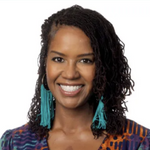Yay!! After a short hiatus, the Digital Money Blog Series is back!
In the last blog post, we spoke about how digital financial inclusion is being positioned to further the efforts in attaining Sustainable Development Goals, with a specific focus on SDG 10 - Reducing Inequality which I felt resonated with the work the Interledger Foundation is doing to drive change and financial access to the underserved and unbanked communities across the globe.
From an organizational perspective, a lot has happened over the past few weeks. At the Interledger Foundation, we continue to advance our work in inspiring a paradigm shift in the payments ecosystem with the hopes of bridging the digital divide hereby enabling access to those currently excluded from traditional banking systems. We’ve launched a series of grant cycles that focus on our core funding priorities: Education, Financial Services, and Ambassadorship; all critical components to our overall strategy to enable digital financial inclusion by raising awareness and aiding the revolution within the digital payments landscape. If you want to learn about the current grant opportunities available, here are the details and strategic focus:
- Preparing the Future Leaders in the Digital Financial Services Space Via Youth Engagement
- Onboarding Community Advocates through the Ambassador Program
- Enabling Innovative Digital Financial Services & Interoperable Payments
Since the launch of this Digital Money Blog Series, the general view has been that the world is going digital and the imminence of digital money is boundless. Whilst this may be so generally, we must admit that there are factors that currently exist disabling people and communities in some locales from accessing modern technological and even more so financial services. As such, we cannot continue to have a discussion about digital financial inclusion without addressing the digital divide and how efforts must be geared toward ensuring the requisite infrastructures, education programs, and favorable systems are in place to encourage and enable access and adoption.
It is not an exaggerated problem when some 2.6 billion of the world’s population does not have access to the internet (World Economic Forum, 2024). Mobile phones have been touted as the key to addressing this problem as it is posited that mobile phones will facilitate access to the internet in low and middle-income territories. However, according to the 2023 GSMA’s Annual State of Mobile Internet Connectivity Report, only 54% of the world’s population now owns a smartphone which leaves a significant 3.4 billion people without access to mobile internet. Frankly, this is quite a large gap that must be bridged to ensure that excluded societies are able to benefit from the possibilities available with digital technology.
Bridging the Digital Divide, Enabling Digital Financial Inclusion
So, what do we do to reduce this significant gap and foster online access and connectivity to the underserved and excluded populace? How do we ensure that for the places where the digital infrastructure exists, there are appropriate programs available to equip persons with the requisite digital literacy and know-how to access and benefit from it? How do we get both the public and private sectors to invest in extending connectivity to remote regions, thereby ensuring access to affordable and reliable internet? How do we traverse the cultural nuances and reduce cultural barriers to enable knowledge-sharing and access to a myriad of socio-economic opportunities in the varying underserved, unbanked communities?
From an ILF perspective, our efforts have been focused on increasing access to modern financial systems that adopt open, interoperable financial and payment solutions for the 1.4 billion people worldwide who are currently excluded from traditional banking systems. This is attainable through our proactive grant programs which seek to collaborate with location-specific individuals, organizations, and governments to eliminate financial roadblocks and expand the usage of open-source technologies and new pathways to accessing financial services. Our strategic approach is supported by our efforts to expand the ecosystem by activating local advocates and champions and increasing awareness to reduce the existing disparities.
Whilst it is possible to make digital financial services accessible to the 1.5 billion underserved people; it will require collaborative efforts of key stakeholders, and functional public-private sector partnerships across all levels, to be impactful. Take the work being done by MojaLoop, for instance, in enabling emerging economies to scale to financial inclusion by leveraging its open-source software which allows varying stakeholders such as central banks and hub operators to provide digital financial services access to individuals with mobile phones, at a significantly reduced costs in the process. To learn more about how MojaLoop is bridging the gap and advancing financial inclusion, you may review their 2024 Annual Report.
Help us map digital financial inclusion across the globe by sharing in the comment below details on any initiatives that are underway and are making strides in bridging the digital divide and/or reducing barriers and enabling access to the underserved, unbanked populace.







Top comments (0)